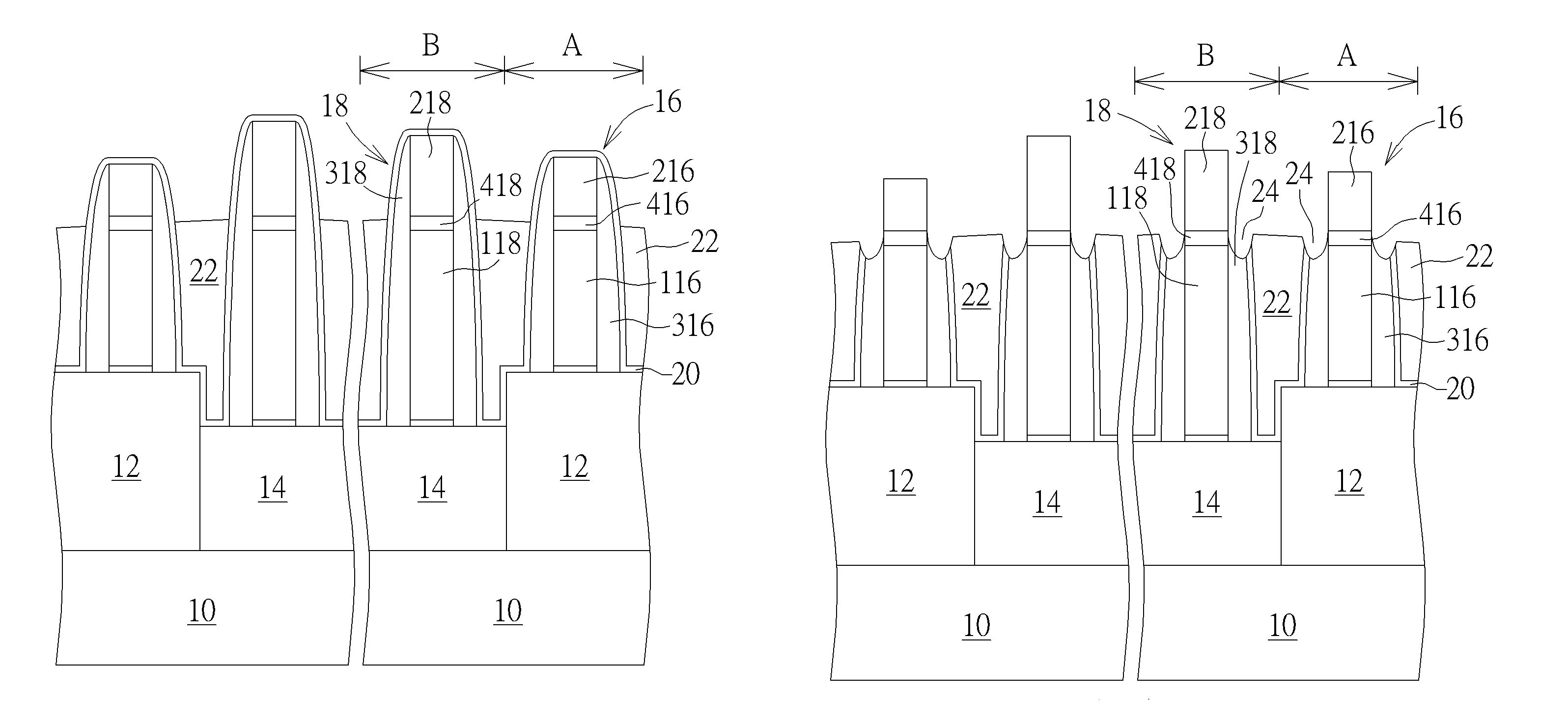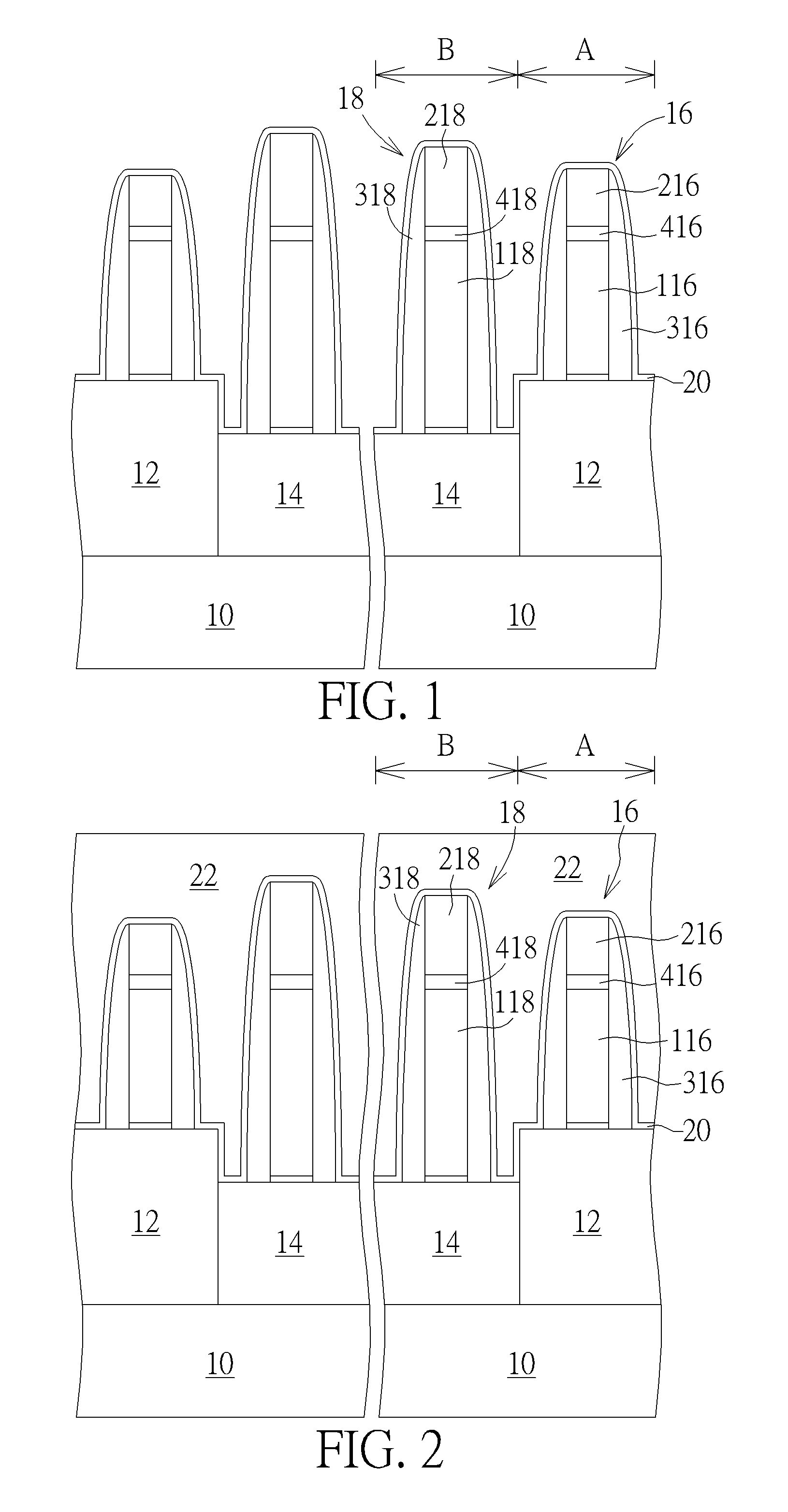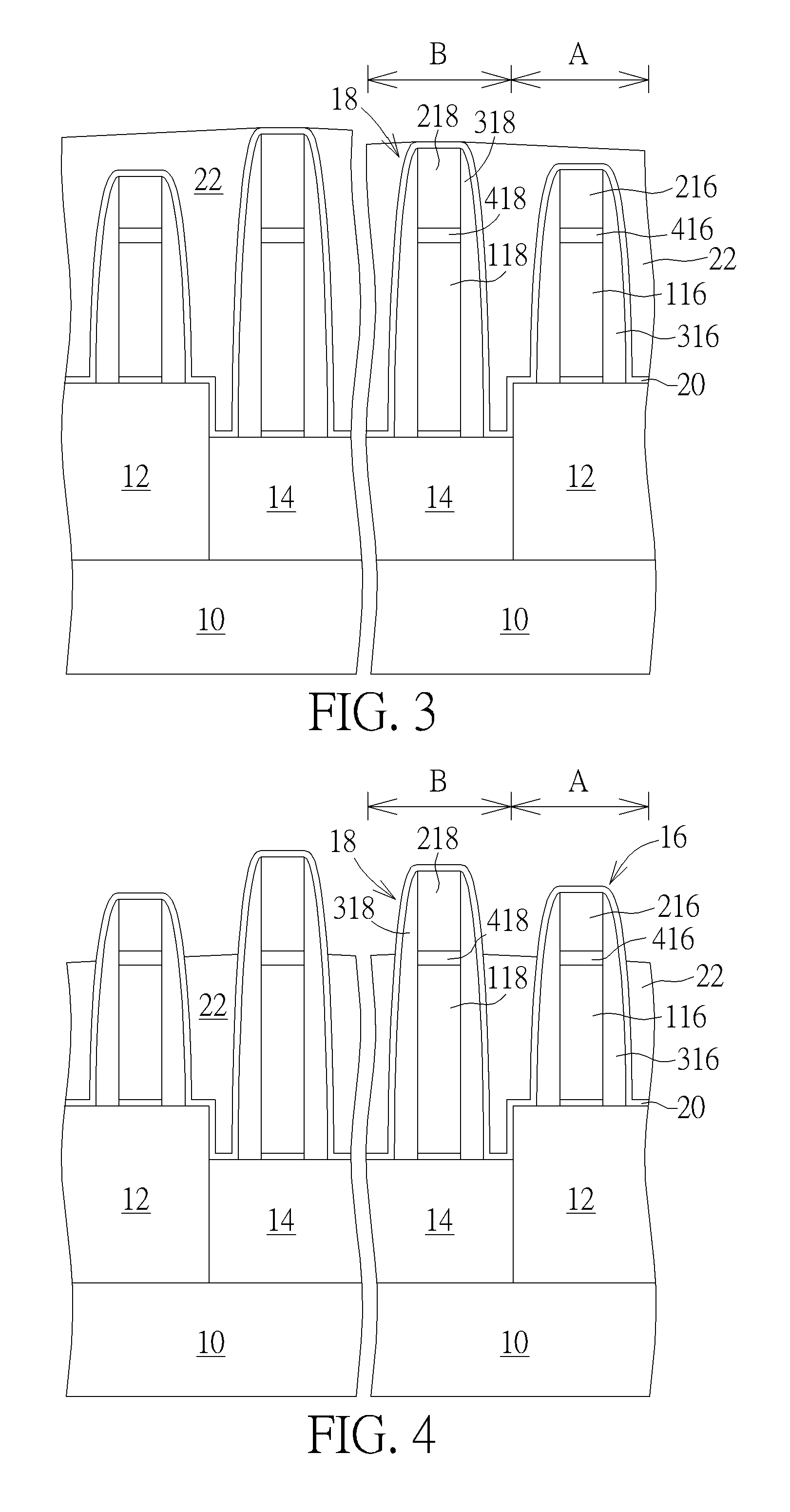Method of removing a hard mask on a gate
- Summary
- Abstract
- Description
- Claims
- Application Information
AI Technical Summary
Benefits of technology
Problems solved by technology
Method used
Image
Examples
Embodiment Construction
[0011]FIG. 1 to FIG. 8 depict schematically a method of removing a hard mask on a gate according to a preferred embodiment of the present invention.
[0012]As shown in FIG. 1, a substrate 10 is provided. The substrate 10 is divided into a first region A and a second region B. The first region A may include a first fin or a first STI and the second region B may include a second fin or a second STI. FIG. 1 takes the first region A including a first fin 12 and the second region B including a second STI 14 as an example. The first fin 12 protrudes from the second STI 14. A first gate structure 16 is formed on the substrate 10 within the first region A. A second gate structure 18 is formed on the substrate 10 within the second region B. In this embodiment, only two gate structures are formed; however, there can be more than two gate structures formed within the first region A or the second region B. The first gate structure 16 includes a first gate 116, a first hard mask 216 disposed on th...
PUM
 Login to view more
Login to view more Abstract
Description
Claims
Application Information
 Login to view more
Login to view more - R&D Engineer
- R&D Manager
- IP Professional
- Industry Leading Data Capabilities
- Powerful AI technology
- Patent DNA Extraction
Browse by: Latest US Patents, China's latest patents, Technical Efficacy Thesaurus, Application Domain, Technology Topic.
© 2024 PatSnap. All rights reserved.Legal|Privacy policy|Modern Slavery Act Transparency Statement|Sitemap



